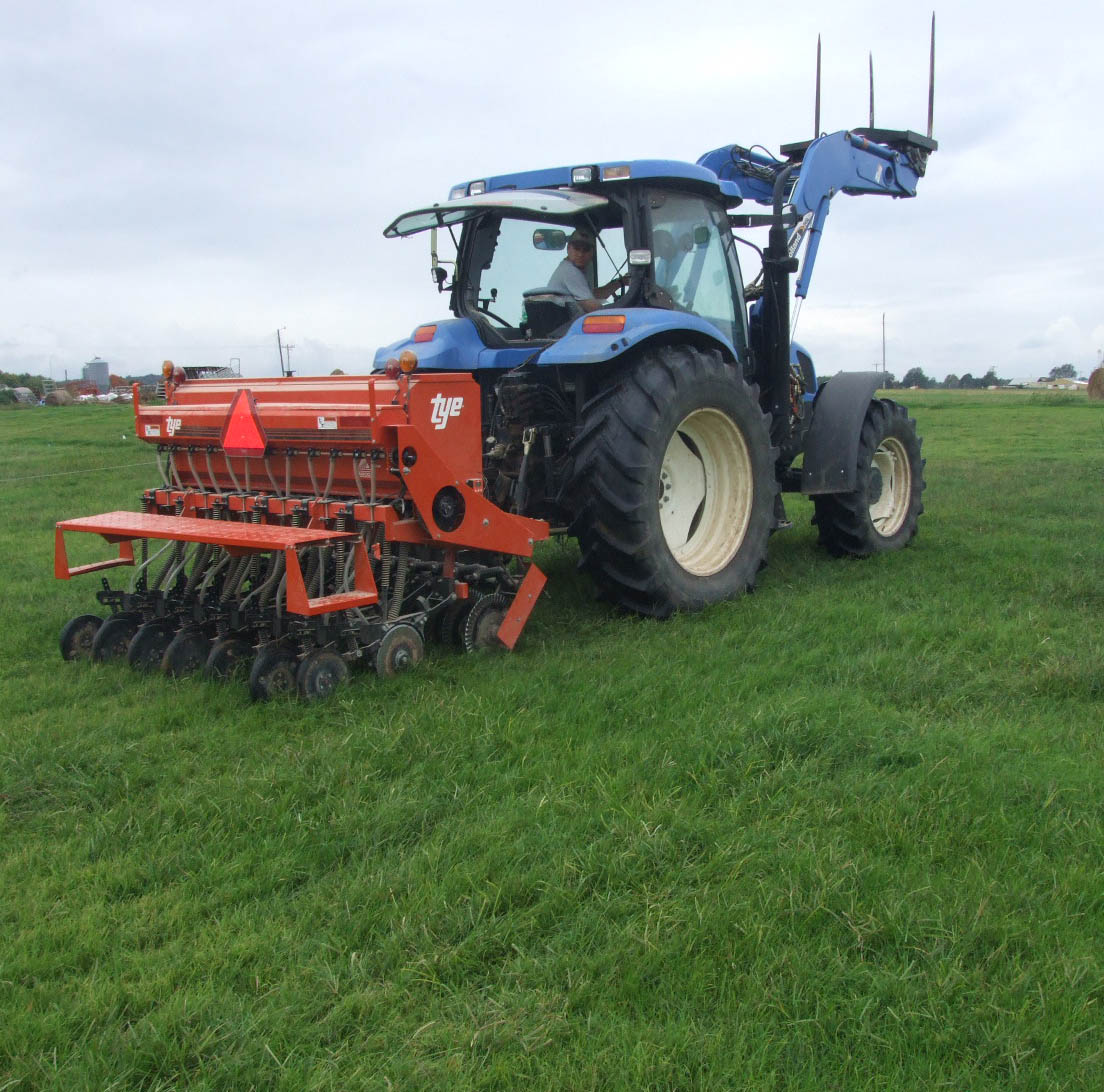Proper setup of no-till drills is critical to getting a successful crop of winter legumes seeded into warm season grasses, said Dirk Philipp, assistant professor for the University of Arkansas System Division of Agriculture.
 NO-TILL — No-till drilling of seed into a bermudagrass pasture. (U of Arkansas System Division of Agriculture photo courtesy Dirk Philipp) |
After months of being idle, the first step is a good cleaning, he said.
“Clean the drill thoroughly from spider webs, soil around the planting wheels, and old seed that might still be in the seed box,” he said. “This also applies to drills that are being leased or borrowed.”
A shop vacuum cleaner can be used to get the seeds out. “Be thorough especially around and inside the opening at the bottom of the seed box where the seed goes through and into the seed tube and down to the planting wheel,” Philipp said.
Remove each seed tube and clean thoroughly inside. He recommends using a cloth attached to a wire that can be pulled through the tube.
However, Philipp nixes the idea of using a power washer for cleaning. “Many seed materials nowadays come coated and this coat will absorb water, which will plug the seed tubes and seed transport mechanisms in the drill.
A few other things on the seed drill prep checklist include:
- Checking the opening/seed feeding mechanism for the seed box is functioning correctly.
- Checking seed transport wheels to ensure seed tube/planting wheel is aligned properly for accurate seed placement
- Check the planting wheels for proper function: are they loose? Do they turn, and do they cut at the same depth into the sod?
Calibration Counts
When it comes to calibrating the drill, “be meticulous,” Philipp said. “Minor errors cause large differences in the field in terms of seed delivery, meaning unevenly planted fields.”
Philipp said that planters come with a calibration table, but these are ballpark figures.
To check seed delivery, “collect from all seed tubes seed and weigh for proper setup.”
Before starting out, check the drive mechanism and tire pressure and be sure seed tubes are dry to prevent clumping and don’t leave seed in the planter overnight “the dew is enough to make the seed clump together.”
A fact sheet is available for download: “Calibrating Drills and Broadcast Planters for Small-Seeded Forage”.
Planting Depth
“Planting depth for legume seeds is crucial, don’t go below .25-.5 inches for planting depth,” Philipp said.
Getting the right depth will require some testing in the field. “Some drills are lowered hydraulically, so use the clamps around the hydraulic cylinder to aid in adjusting the height,” he said. “When drilling into sod, use a pocketknife to carefully open the drilling rows to see how deep the seeds are. All planting wheels should provide the same depth and seed tubes deliver the same amount of seed.”
After planting a few acres, check if amount of seed delivery is on target by visually estimating the amount that was planted already or weighing back amounts left in the seed box after finishing the planting process.






Post a comment
Report Abusive Comment